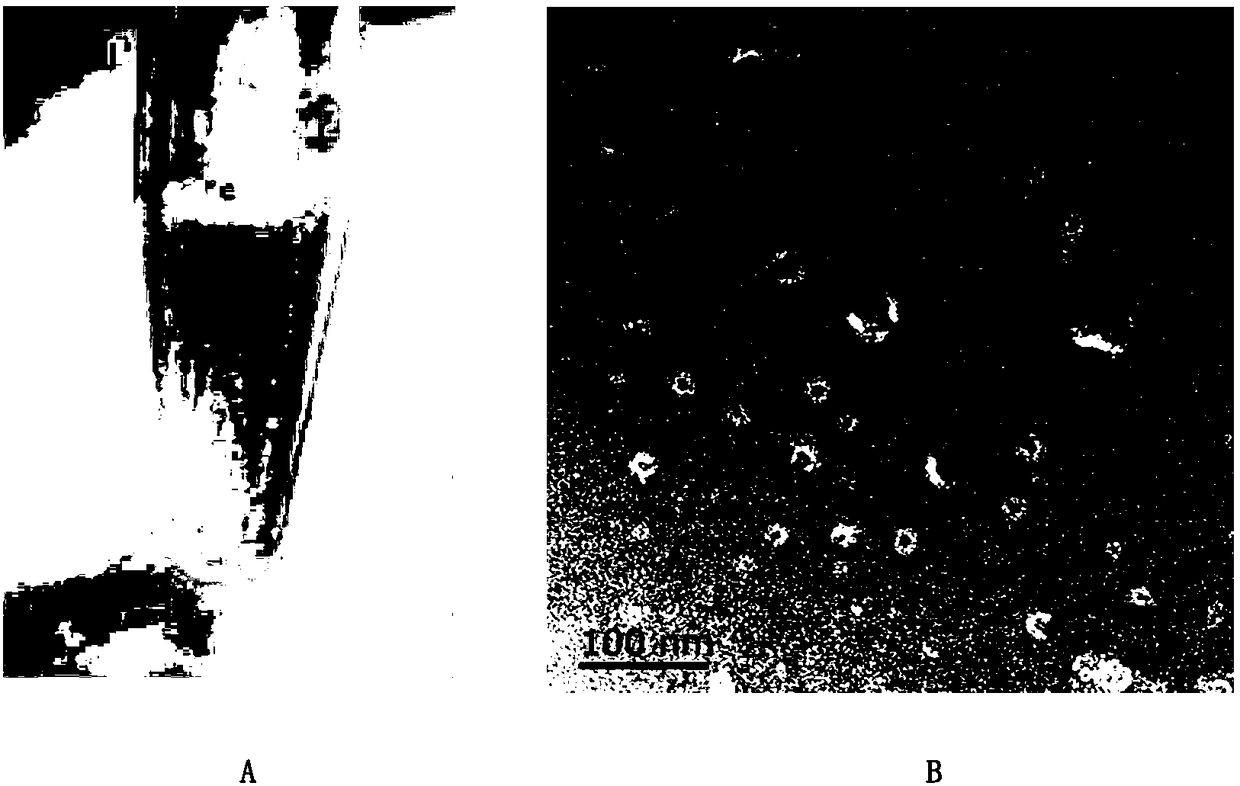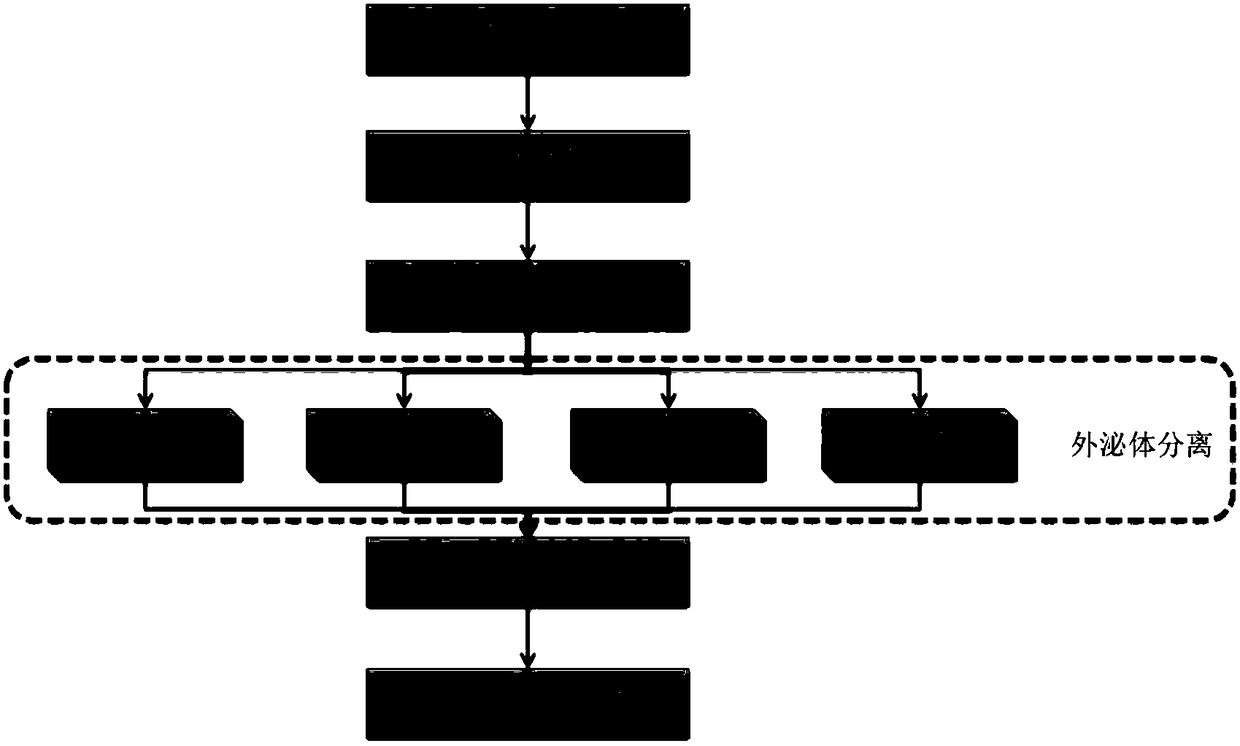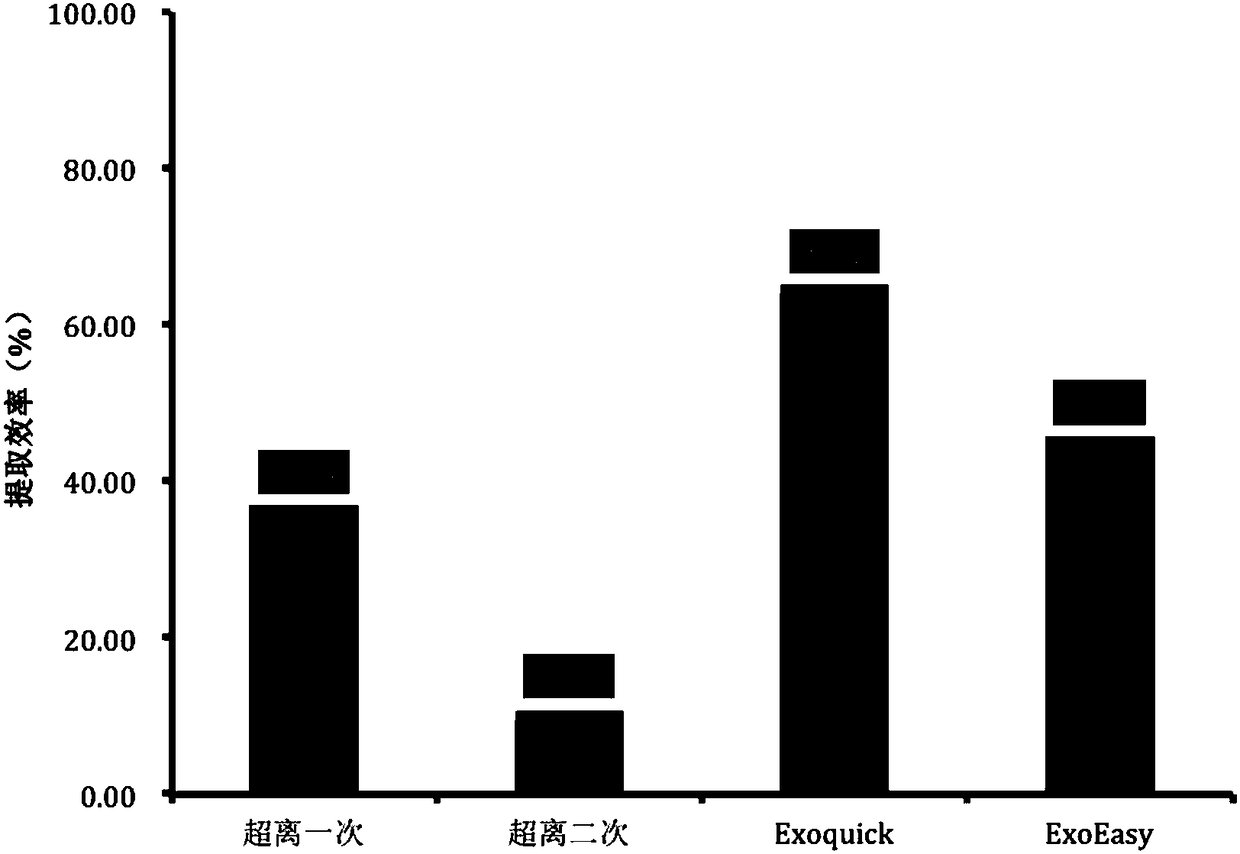Method for evaluation and quality control of vesicle separating efficiency based on liposome
A liposome and lipid technology, applied in the field of analysis and testing, can solve the problems of large sample size, inability to effectively evaluate and quality control the vesicle separation efficiency of clinical samples, and cumbersome operations.
- Summary
- Abstract
- Description
- Claims
- Application Information
AI Technical Summary
Problems solved by technology
Method used
Image
Examples
Embodiment 1
[0038] The preparation of embodiment 1 fluorescent liposome
[0039] 1. Preparation of liposomes by constant pressure controlled extrusion
[0040] Transfer 100 μL of chloroform to a glass vial (capacity 20 mL) using a 250 μL sealed glass syringe; add 30 μL of methanol to the same glass vial using a 100 μL sealed glass syringe; transfer 216 μL of 10 mg / mL phosphatidylcholine, 42 μL of 10 mg / mL phospholipid Acetyl ethanolamine and 20 μL 11 mg / mL cholesteryl ester and 0.2 mmol Fluorescein DHPE were added to the above glass vial; the organic solvent was evaporated using a slow flow of nitrogen gas until the formation of a film lipid was observed at the bottom of the vial; the vial was placed in a vacuum desiccator for at least 30 Minutes to remove residual solvent; add 2ml of PBS buffer, pass through a filter with a pore size of 100nm to obtain liposomes with a particle size similar to vesicles (exosomes).
[0041] 2. Removal of fluorescent dyes free from liposomes
[0042] Tra...
Embodiment 2
[0043] The identification of embodiment 2 liposomes
[0044] Take 40 μL of the liposome prepared in Example 1, dilute it to 200 μL with PBS buffer, measure the particle size of the liposome with a Malvern laser particle size analyzer Zetasizer Nano ZS, and record the results. Take 10 μL liposomes with ddH 2 O was diluted at a volume ratio of 1:10; the diluted liquid was transferred to the carbon film for adsorption for 10 minutes, and then washed with DI water, and uranyl acetate UO 2 (CH 3 COO) 2 2H 2 O, after staining for 1 minute, use a transmission electron microscope (TEM), model: JEOL-JEM1400 to carry out visual detection of liposome morphology, and take pictures for recording.
[0045] The results showed that the obtained liposome had a particle size of 30-150nm and an average density of 1.06-1.23g / mL.
Embodiment 3
[0046] Example 3 Liposomes are used to evaluate the extraction efficiency of different vesicle isolation methods
[0047] Take 40 μL of 1 mg / ml liposome prepared in Example 1, dilute to 250 μL with PBS, add 750 μL normal human serum, and ultracentrifuge respectively [see Théry C, Amigorena S, Raposo G, et al.Isolation and Characterization of Exosomes from Cell Culture Supernatants and Biological Fluids[M] / / Current Protocols in Cell Biology.John Wiley&Sons, Inc.2006:Unit3.22.], membrane affinity (Qiagen exoEasy) [see Enderle D, Spiel A, Coticchia C M, etal.Characterization of RNA from Exosomes and Other Extracellular VesiclesIsolated by a Novel Spin Column-Based Method[J].Plos One,2015,10(8):e0136133.], polymer precipitation (SBI Exoquick)[see Tang Y T, Huang Y Y, Zheng L, etal.Comparison of isolation methods of exosomes and exosomal RNA from cellculture medium and serum:[J].International Journal of Molecular Medicine,2017,40(3):834.], the vesicles were isolated according to th...
PUM
| Property | Measurement | Unit |
|---|---|---|
| particle size | aaaaa | aaaaa |
| particle diameter | aaaaa | aaaaa |
| particle diameter | aaaaa | aaaaa |
Abstract
Description
Claims
Application Information
 Login to View More
Login to View More - R&D
- Intellectual Property
- Life Sciences
- Materials
- Tech Scout
- Unparalleled Data Quality
- Higher Quality Content
- 60% Fewer Hallucinations
Browse by: Latest US Patents, China's latest patents, Technical Efficacy Thesaurus, Application Domain, Technology Topic, Popular Technical Reports.
© 2025 PatSnap. All rights reserved.Legal|Privacy policy|Modern Slavery Act Transparency Statement|Sitemap|About US| Contact US: help@patsnap.com



